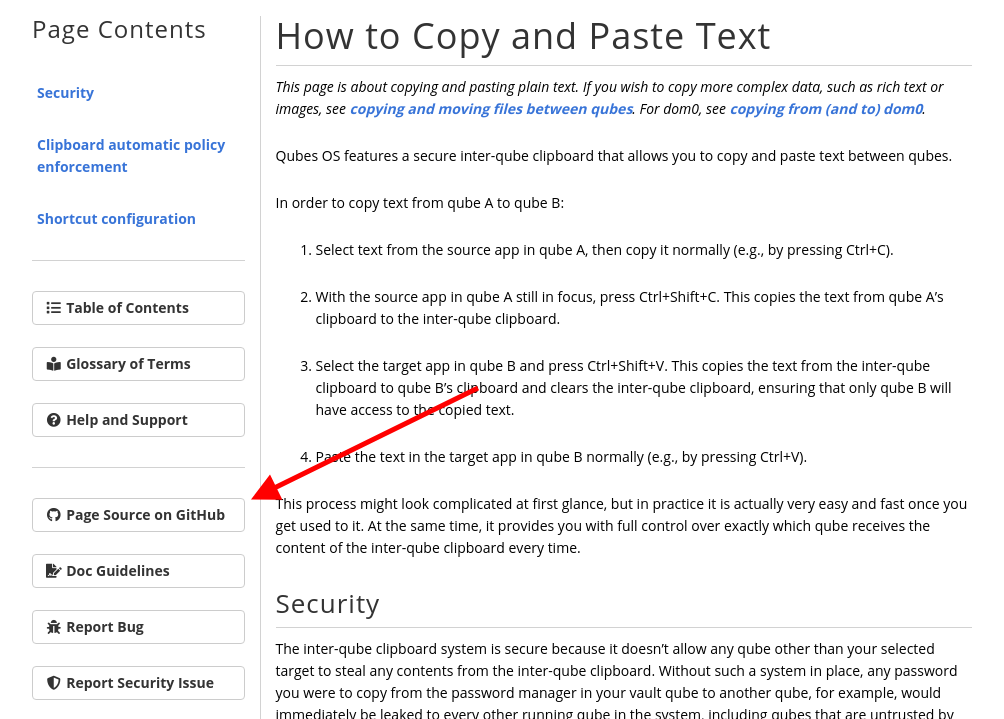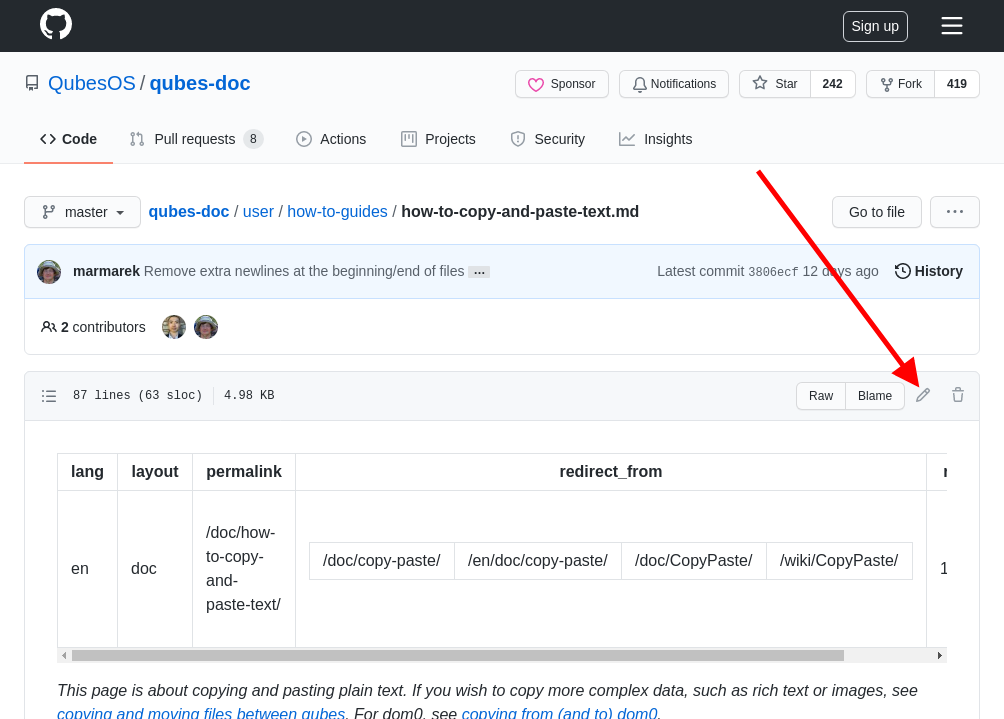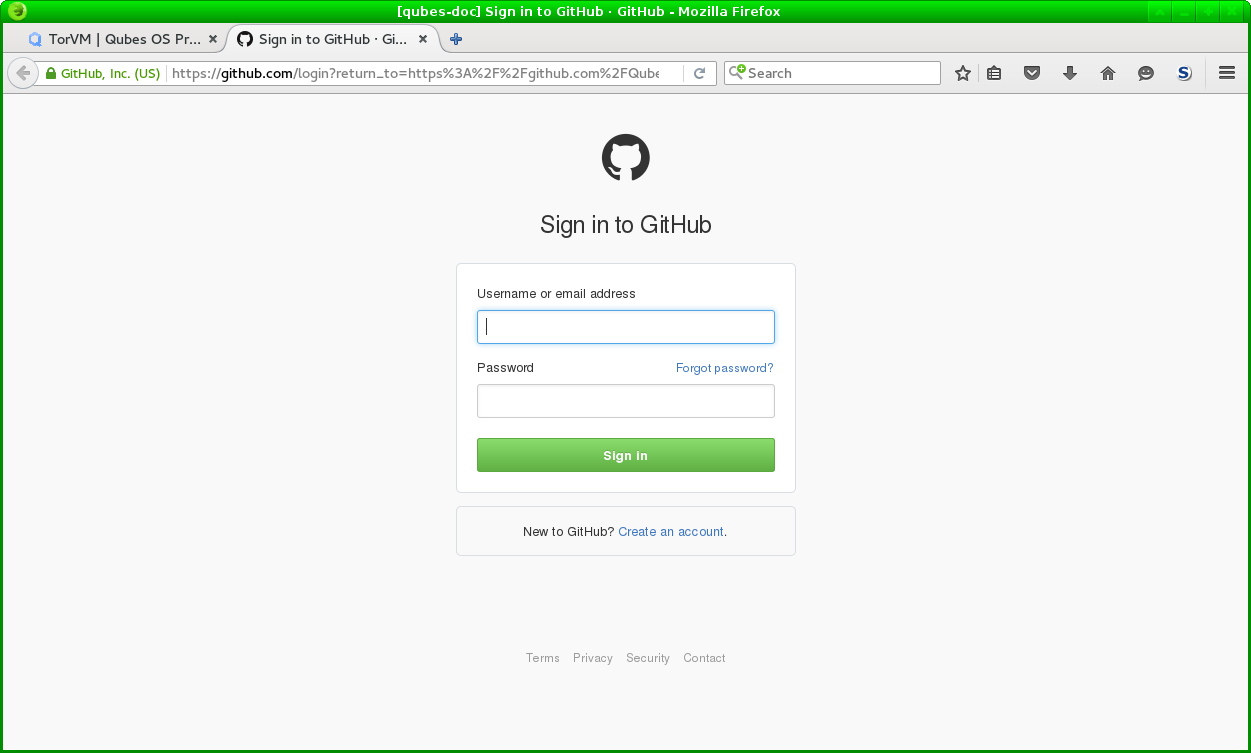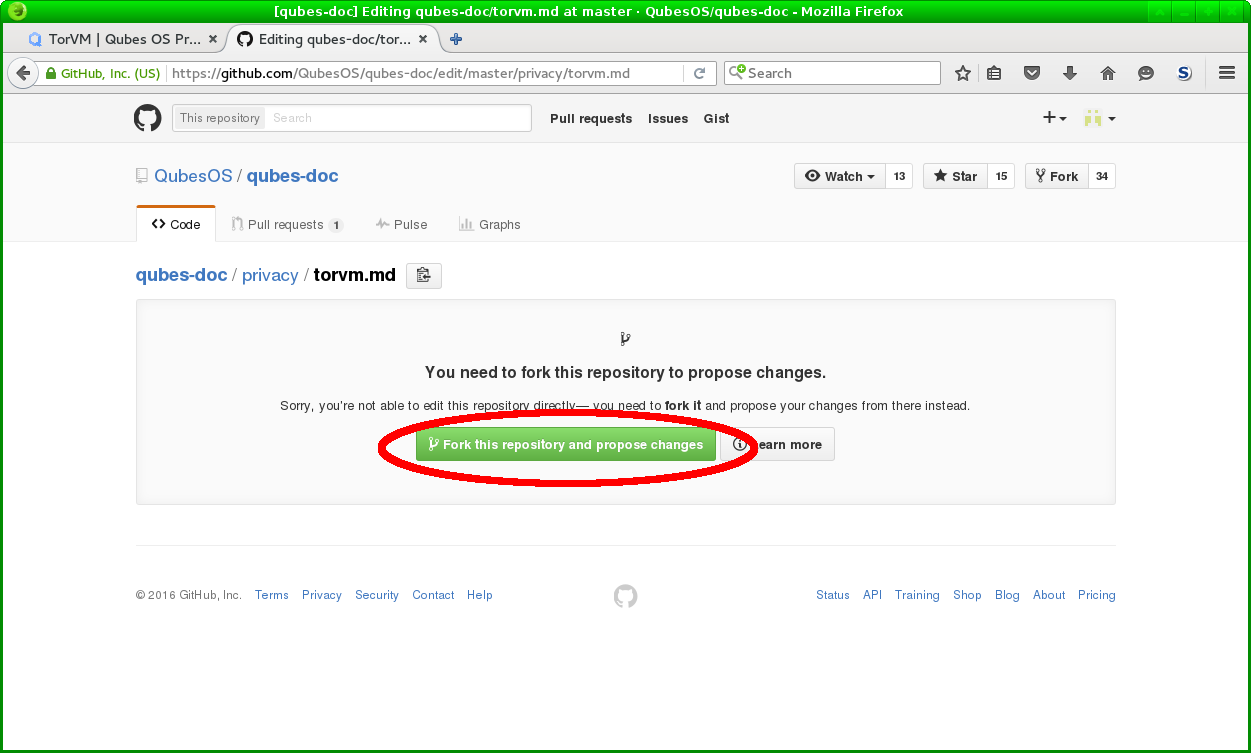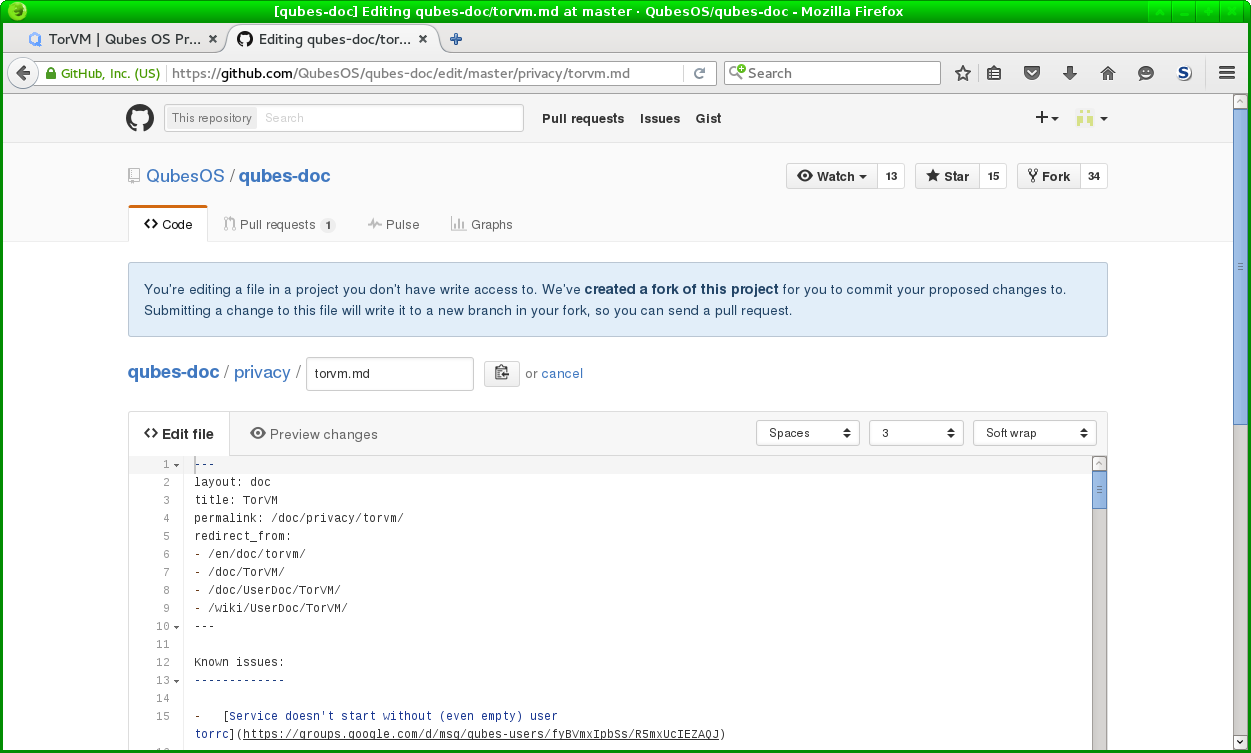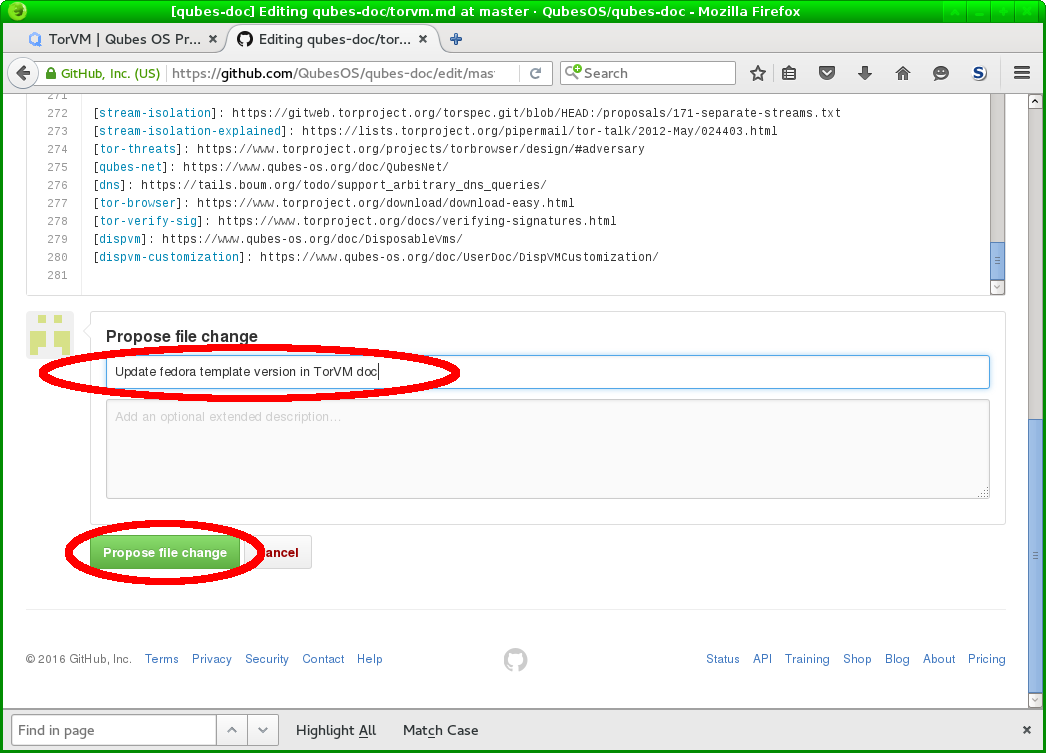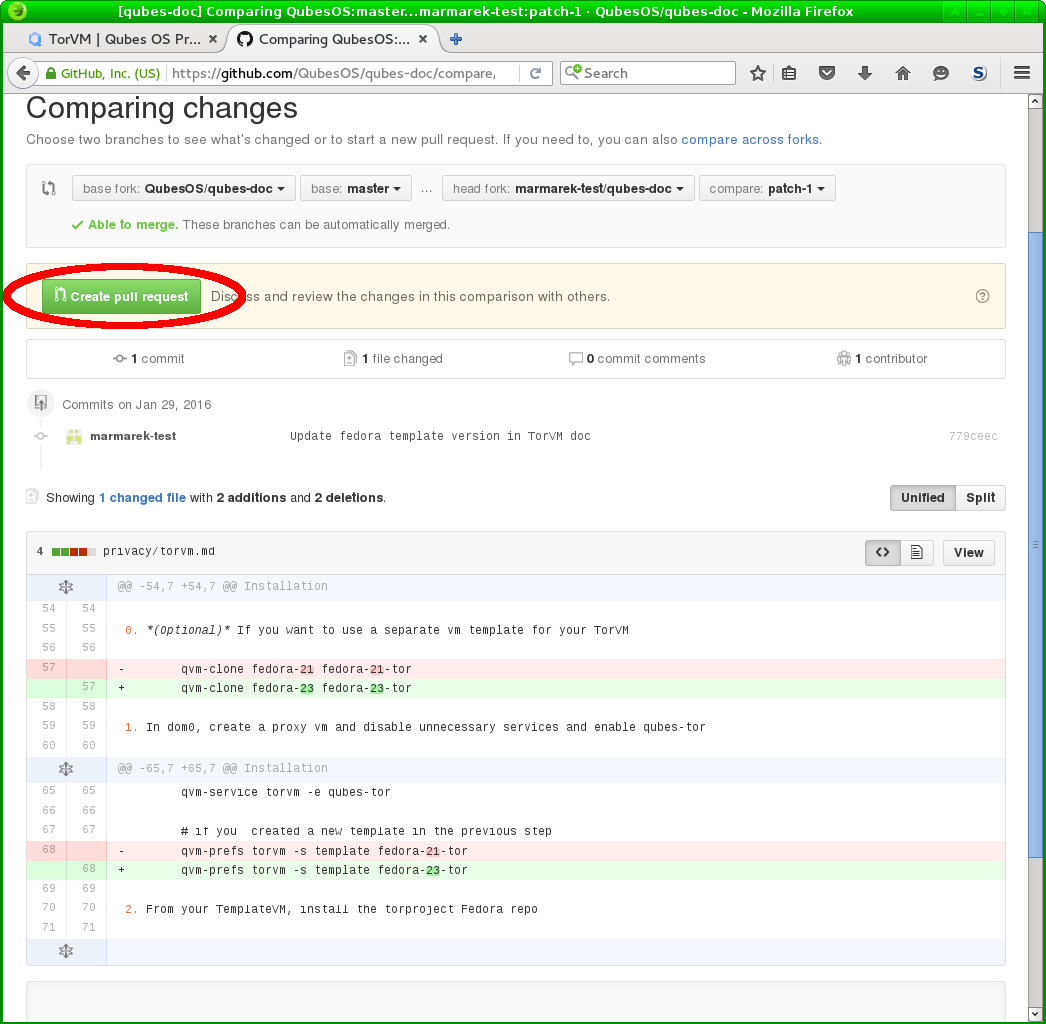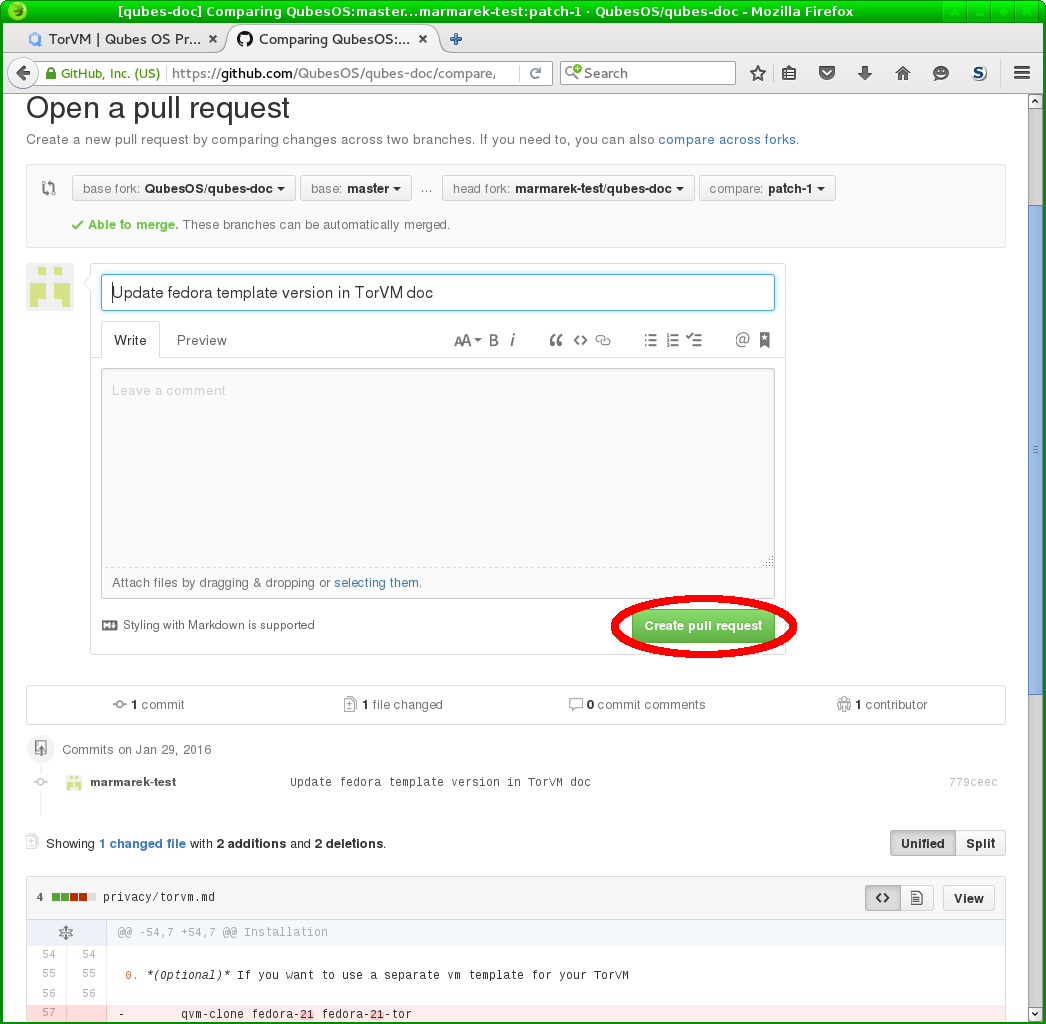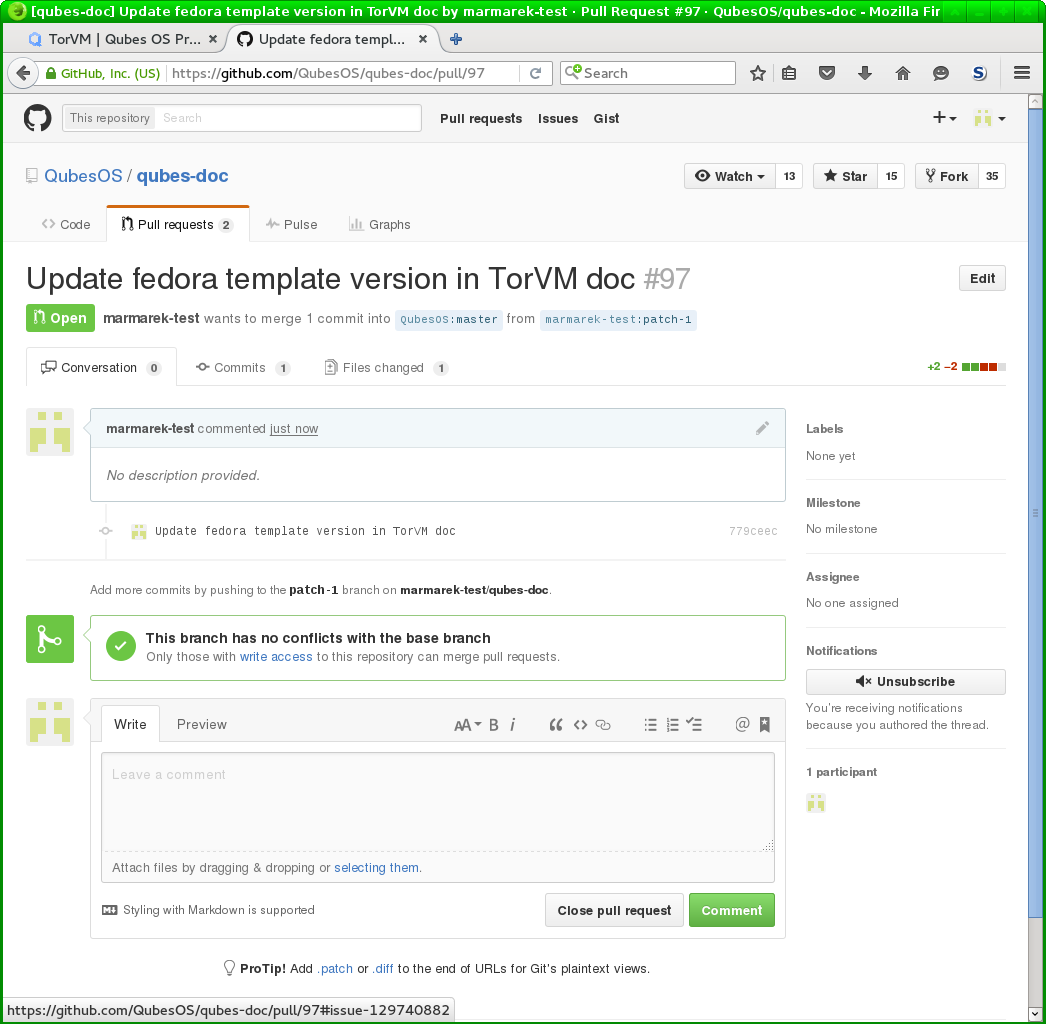How to edit the documentation
Also see the documentation style guide.
Qubes OS documentation pages are stored as plain text Markdown files in the qubes-doc repository. By cloning and regularly pulling from this repo, users can maintain their own up-to-date offline copy of all Qubes documentation rather than relying solely on the web.
The documentation is a volunteer community effort. People like you are constantly working to make it better. If you notice something that can be fixed or improved, please follow the steps below to open a pull request!
How to submit a pull request
We keep all the documentation in qubes-doc, a dedicated Git repository hosted on GitHub. Thanks to GitHub’s easy web interface, you can edit the documentation even if you’re not familiar with Git or the command line! All you need is a free GitHub account.
A few notes before we get started:
-
Since Qubes is a security-oriented project, every documentation change will be reviewed before it’s accepted. This allows us to maintain quality control and protect our users.
-
To give your contribution a better chance of being accepted, please follow our documentation style guide.
-
We don’t want you to spend time and effort on a contribution that we can’t accept. If your contribution would take a lot of time, please file an issue for it first so that we can make sure we’re on the same page before significant works begins.
-
Alternatively, you may already have written content that doesn’t conform to these guidelines, but you’d be willing to modify it so that it does. In this case, you can still submit it by following the instructions below. Just make a note in your pull request (PR) that you’re aware of the changes that need to be made and that you’re just asking for the content to be reviewed before you spend time making those changes.
-
Finally, if you’ve written something that doesn’t belong in qubes-doc but that would be beneficial to the Qubes community, please consider adding it to the external documentation.
(Advanced users: If you’re already familiar with GitHub or wish to work from the command line, you can skip the rest of this section. All you need to do to contribute is to fork and clone the qubes-doc repo, make your changes, then submit a pull request.)
Ok, let’s begin. Every documentation page has a “Page Source on GitHub” button. Depending on the size of your screen, it may either be on the side (larger screens) or on the bottom (smaller screens).
When you click on it, you’ll be taken to the source file — usually a Markdown
(.md) file — on GitHub. On this page, there will be a button to edit the
file.
You’ll be prompted to sign in with your GitHub username and password (if you aren’t already logged in). You can also create a free account from here.
If this is your first contribution to the documentation, you need to “fork” the repository (make your own copy). It’s easy — just click the big green button on the next page. This step is only needed the first time you make a contribution.
Now you can make your modifications. You can also preview the changes to see how they’ll be formatted by clicking the “Preview changes” tab. If you want to add images, please see How to add images. If you’re making formatting changes, please render the site locally to verify that everything looks correct before submitting any changes.
Once you’re finished, describe your changes at the bottom and click “Propose file change”.
After that, you’ll see exactly what modifications you’ve made. At this stage, those changes are still in your own copy of the documentation (“fork”). If everything looks good, send those changes to us by pressing the “Create pull request” button.
You will be able to adjust the pull request message and title there. In most cases, the defaults are ok, so you can just confirm by pressing the “Create pull request” button again. However, if you’re not ready for your PR to be reviewed or merged yet, please make a draft PR instead.
If any of your changes should be reflected in the documentation index (a.k.a. table of contents) — for example, if you’re adding a new page, changing the title of an existing page, or removing a page — please see How to edit the documentation index.
That’s all! We will review your changes. If everything looks good, we’ll pull them into the official documentation. Otherwise, we may have some questions for you, which we’ll post in a comment on your pull request. (GitHub will automatically notify you if we do.) If, for some reason, we can’t accept your pull request, we’ll post a comment explaining why we can’t.
How to edit the documentation index
The source file for the documentation index (a.k.a. table of contents) is doc-index.yml.
Editing this file will change what appears on the documentation index. If your pull request (PR) adds, removes, or edits anything that should be reflected in the documentation index, please make sure you also submit an associated pull request against this file.
How to add images
To add an image to a page, use the following syntax in the main document (see here for why this syntax is important).
[](/attachment/doc/image.png)
Then, submit your image(s) in a separate pull request to the qubes-attachment repository using the same path and filename. This is the only permitted way to include images. Do not link to images on other websites.
Serving the website locally
You can serve the website offline on your local machine by following these instructions. This can be useful for making sure that your changes render the way you expect, especially when your changes affect formatting, images, tables, styling, etc.
Security
Also see: Should I trust this website?
All pull requests (PRs) against qubes-doc must pass review prior to be merged, except in the case of external documentation (see #4693). This process is designed to ensure that contributed text is accurate and non-malicious. This process is a best effort that should provide a reasonable degree of assurance, but it is not foolproof. For example, all text characters are checked for ANSI escape sequences. However, binaries, such as images, are simply checked to ensure they appear or function the way they should when the website is rendered. They are not further analyzed in an attempt to determine whether they are malicious.
Once a pull request passes review, the reviewer should add a signed comment
stating, “Passed review as of <LATEST_COMMIT>” (or similar). The
documentation maintainer then verifies that the pull request is mechanically
sound (no merge conflicts, broken links, ANSI escapes, etc.). If so, the
documentation maintainer then merges the pull request, adds a PGP-signed tag to
the latest commit (usually the merge commit), then pushes to the remote. In
cases in which another reviewer is not required, the documentation maintainer
may review the pull request (in which case no signed comment is necessary,
since it would be redundant with the signed tag).
Questions, problems, and improvements
If you have a question about something you read in the documentation or about how to edit the documentation, please post it on the forum or send it to the appropriate mailing list. If you see that something in the documentation should be fixed or improved, please contribute the change yourself. To report an issue with the documentation, please follow our standard issue reporting guidelines. (If you report an issue with the documentation, you will likely be asked to submit a pull request for it, unless there is a clear indication in your report that you are not willing or able to do so.)
